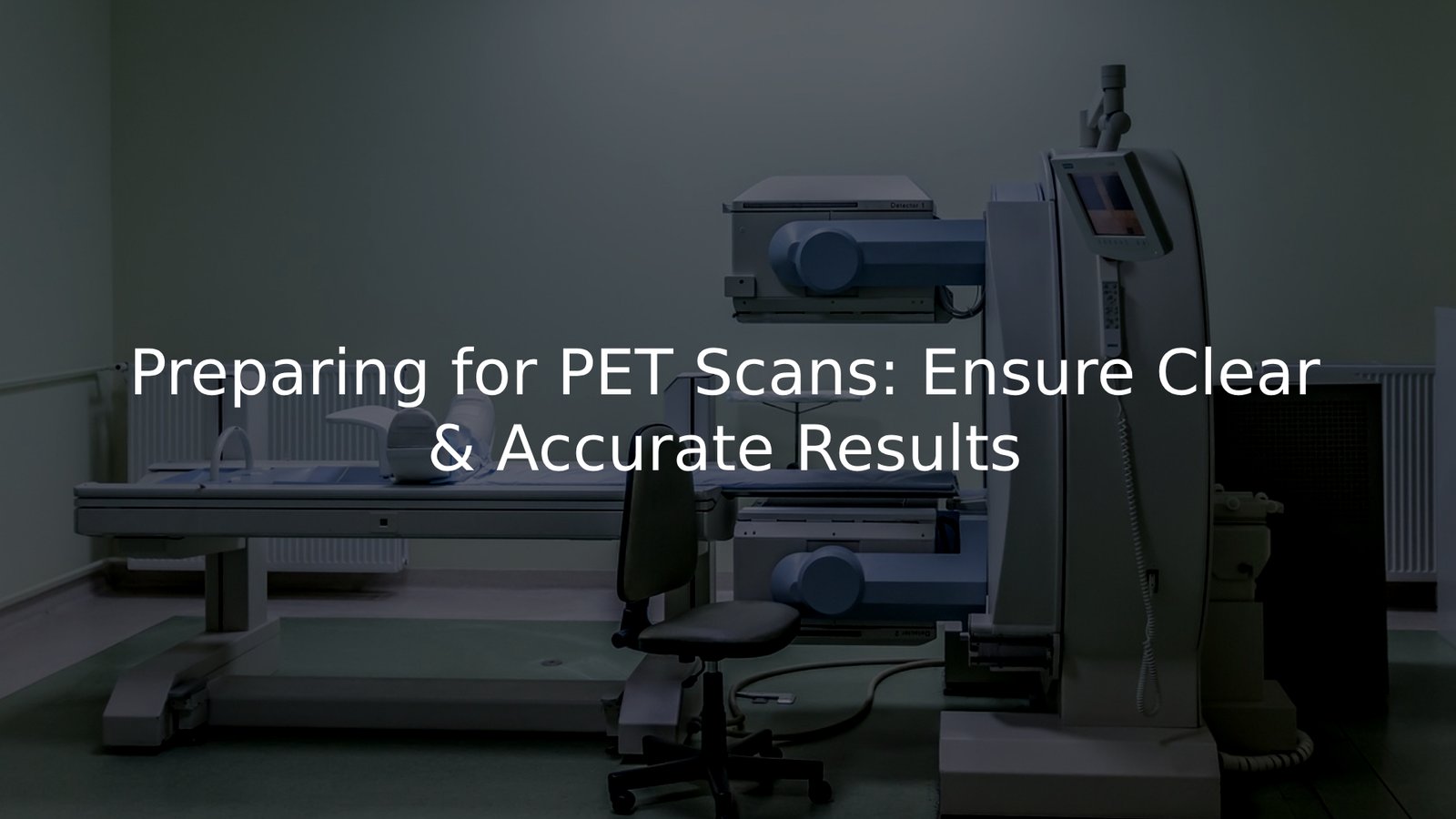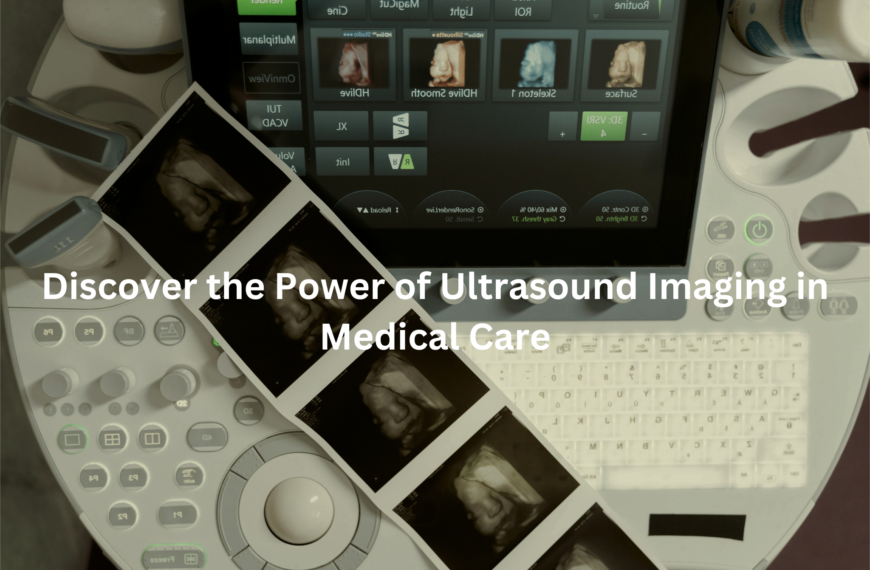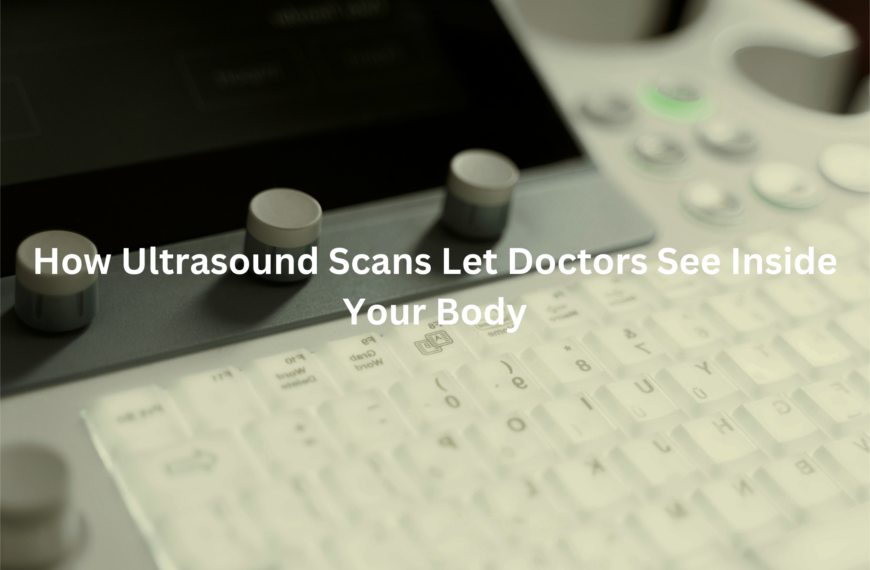Learn the right way to prepare for PET scans—avoid mistakes, improve image accuracy, and make the process smoother.
Preparing properly for a PET scan is key to getting the most accurate results. Factors like diet, physical activity, and medication can affect the quality of the images, potentially leading to misdiagnosis or the need for repeat scans. This guide outlines everything you need to know, from fasting requirements to post-scan care, so you can approach your appointment with confidence.
Key Takeaway
- Follow fasting and dietary instructions to avoid interfering with the radiotracer.
- Avoid strenuous activity before the scan for clearer results.
- Stay hydrated after the scan to help your body flush out the radiotracer.
What is a PET Scan & How It Works
A Positron Emission Tomography (PET) scan is a non-invasive imaging technique used to detect metabolic activity in the body. It’s particularly helpful in diagnosing conditions like cancer, heart disease, and brain disorders. Unlike traditional imaging methods, which focus on the structure of tissues, a PET scan also shows how those tissues are functioning.
There are a few different types of PET scans, each offering unique insights:
- PET: Focuses mainly on metabolic activity.
- PET-CT: Combines PET with a computed tomography scan, giving a clearer view of both the structure and function.
- PET-MRI: Pairs PET with magnetic resonance imaging, delivering highly detailed images, particularly useful for neurological and cancer-related assessments.
These variations allow doctors to get a comprehensive view of both the structure and function of tissues, which is essential for accurate diagnosis and treatment planning. (1)
Why Preparation is Important
Preparing properly for a PET scan is essential to get clear, accurate images. By following the right preparation steps, you’ll help ensure that the results are as precise as possible, which is crucial for accurate diagnosis and treatment planning. If preparation is not done correctly, it could lead to false readings, causing delays in diagnosis or unnecessary additional tests.
Following the guidelines also reduces the chance of unnecessary exposure to extra radiation. Things like diet and exercise can interfere with the scan, so it’s important to stick to the instructions. This way, the images you receive will truly reflect what’s happening in your body.
Key preparation tips:
- Follow dietary restrictions: Avoid certain foods and drinks prior to the scan.
- Limit physical activity: Steer clear of strenuous exercise in the days before your appointment.
- Consult your doctor: Discuss any health conditions or medications with your healthcare provider beforehand. (2)
Medical Considerations Before the Scan
Before your PET scan, it’s important to provide your doctor with some key information to ensure everything goes smoothly. Be sure to let them know about any allergies you may have, particularly to medications or contrast materials that might be used during the scan.
It’s also a good idea to bring a list of all the medications you’re currently taking, including prescription, over-the-counter medicines, and any supplements.
If you have any existing health conditions, such as diabetes, or if there’s a chance you could be pregnant, make sure to mention these to your doctor. For those with diabetes, specific guidelines will be given to manage your blood sugar levels before the procedure, helping ensure the best possible results.
Key details to share:
- Allergies: Especially to medications or contrast materials.
- Current medications: Include prescription, over-the-counter, and supplements.
- Health conditions: Like diabetes or pregnancy considerations.
Food & Drink Restrictions
To get the best results from your PET scan, it’s important to fast beforehand. For at least 6 hours before your appointment, avoid eating or drinking anything, except for plain water. This is because food—especially sugary or high-carb foods—can interfere with the radiotracer used during the scan, which is essential for capturing clear images.
In the 24 hours before your scan, it’s recommended to stick to a lower-carb diet. This ensures your body’s metabolism won’t cause unnecessary interference with the scan results. If you have diabetes, your doctor will provide specific instructions on managing your insulin or blood sugar levels to ensure you’re well-prepared.
Key pre-scan tips:
- Fasting: No food or drink (except water) for at least 6 hours before the scan.
- Avoid high-carb meals: For 24 hours prior to the scan.
- Diabetes management: Follow your doctor’s advice for managing blood sugar levels.
Activity & Clothing Guidelines
In the 24 hours leading up to your PET scan, it’s best to steer clear of any intense physical activity, including heavy exercise. This is to avoid any changes in your body’s metabolism that could interfere with the scan results. Giving your body time to rest ensures the most accurate imaging.
On the day of your appointment, aim to arrive 15 to 30 minutes early. This gives you time to fill out any paperwork and get comfortable before the scan. When dressing, choose loose, comfortable clothing that doesn’t contain metal. Items like zippers, buttons, or jewellery can affect the imaging process.
Key preparation tips:
- Avoid intense exercise: No heavy activity for 24 hours before your scan.
- Arrive early: Aim for 15-30 minutes before your appointment time.
- Wear comfortable clothing: Avoid metal items like zippers or jewellery.
What Happens During the Scan
On the day of your PET scan, the process begins with the insertion of an intravenous (IV) line into your arm. This is where the radiotracer will be administered, and once injected, you’ll need to wait for around 60 to 90 minutes to allow the tracer to circulate through your body.
During the scan itself, you’ll lie down on a padded table while the scanner does its work. It’s important to stay as still as possible to ensure clear and accurate images, which will take approximately 20 to 30 minutes.
After the scan, you’ll be able to go about your day with minimal recovery time. The entire process, including the prep time and post-scan recovery, usually lasts about 2 to 3 hours.
Key points:
- IV line insertion: The radiotracer is administered via an IV in your arm.
- Wait time: You’ll wait 60-90 minutes for the tracer to circulate.
- Stay still: The scan takes around 20-30 minutes, requiring you to remain still.
Post-Scan Care
After your PET scan, it’s important to take care of yourself and help your body process the radiotracer. To assist with clearing it out, make sure to drink plenty of fluids—aim for at least five glasses of water.
You should be able to resume your usual activities shortly after the scan, but be sure to follow any specific instructions your doctor has given you. If you’re breastfeeding, it’s recommended to wait at least 24 hours before resuming feeding your baby to ensure their safety.
Key things to keep in mind:
- Stay hydrated: Drink at least five glasses of water to help flush out the radiotracer.
- Back to your routine: Feel free to get back to your regular activities unless otherwise advised.
- Breastfeeding: Wait at least 24 hours before breastfeeding, as recommended by your doctor.
Common Questions & Extra Tips
Credits: HealthTree University for Multiple Myeloma
A PET scan involves minimal radiation exposure, which is well within medical safety guidelines. The benefits of obtaining clear and accurate results typically outweigh any risks. However, if you have concerns about radiation, it’s a good idea to discuss them with your doctor.
Certain factors can affect the accuracy of your scan results, such as recent exercise, blood sugar levels, and specific medications. To ensure the best outcome, it’s important to follow the preparation instructions carefully.
Here are a few key things to remember:
- Radiation safety: The radiation used in a PET scan is minimal and well within safe limits.
- Factors affecting results: Recent exercise, blood sugar levels, and medications can impact scan results.
- Costs and insurance: It’s best to check with your insurance provider for coverage, as costs can vary.
- Results timeline: Your doctor will typically receive your scan results within a few days and will explain the next steps.
Conclusion
By following these steps and consulting your doctor, you’ll ensure your PET scan goes smoothly and delivers the most accurate results. If you have any questions or concerns, don’t hesitate to ask—being well-prepared is always better than being unsure!
Clear communication with your healthcare team is key to a successful scan and gaining a better understanding of your health. Your doctor is there to guide you through the process.
FAQ
What is a PET scan?
A PET scan, or positron emission tomography, is an imaging test that allows doctors to see how organs and tissues are functioning in your body. It helps detect issues like cancer cells, heart disease, and brain disorders by providing detailed images of your body’s metabolic activity.
What should I avoid before a PET scan?
Before your PET scan, it’s important to avoid strenuous exercise as it could interfere with the results. Also, be mindful of what you eat, especially foods containing simple sugar or a high-carbohydrate diet, as these can affect your body’s sugar metabolism.
How long does a PET scan take?
The entire process usually takes around 2-3 hours, including the time spent preparing for the scan. After receiving the radioactive tracer, you’ll wait for it to circulate, and the scanning itself typically lasts 20-30 minutes.
Can I resume normal activities after a PET scan?
Yes, you can go back to your normal activities after the scan. However, it’s important to drink plenty of water to help flush the radioactive tracer from your body. If you’re breast feeding or have other specific health conditions, be sure to follow your doctor’s instructions.
Will a PET scan expose me to radiation?
The radiation dose from a PET scan is minimal and well within medical safety guidelines. While you will be exposed to some radiation, the benefits of getting an accurate diagnosis usually outweigh the risks. If you have concerns, feel free to discuss them with your doctor.
References
- https://www.insideradiology.com.au/pet-scan/
- https://www.healthdirect.gov.au/pet-scan




